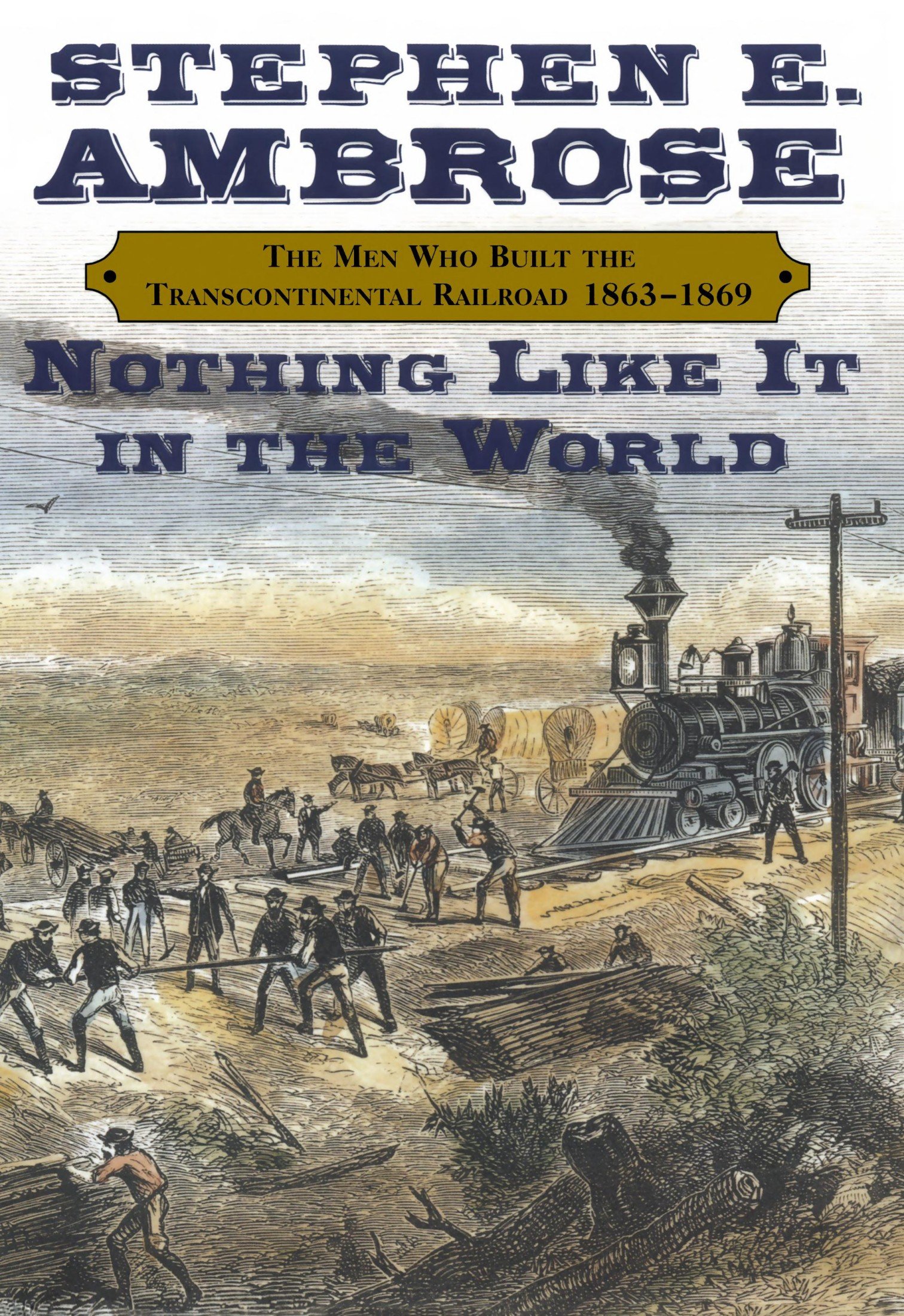
Nothing Like It In the World
The Men Who Built the Transcontinental Railroad 1863-1869
فرمت کتاب
ebook
تاریخ انتشار
2000
Reading Level
7
ATOS
8.5
Interest Level
9-12(UG)
نویسنده
Stephen E. Ambroseناشر
Simon & Schusterشابک
9780743210836
کتاب های مرتبط
- اطلاعات
- نقد و بررسی
- دیدگاه کاربران
نقد و بررسی

July 31, 2000
On May 10, 1869, telegraphers sent the word done from Promontory Point, Utah, throughout the nation, signaling the completion of what Walt Whitman referred to as "the road between Europe and Asia." The transcontinental railroad, which connected the vast American territories, cut the trip from New York City to San Francisco from many months to seven days. Ambrose's (Undaunted Courage) epic account, diligently and powerfully read by DeMunn, details the incredible mobilization of manpower and financing that was "the very embodiment of system." He tells it all with verve: the financial finagling, the impulse to simplify by "exterminating" Native Americans, the backbreaking work and the fierce competition between railroad companies that fueled the effort. This gritty, momentous tale of the personalities that pressed across the wild American West with rail and tie celebrates the feat that brought the U.S. into the modern age. Simultaneous release with the S&S hardcover and trade paperback. (Forecasts, July 3). (Aug.)n

August 28, 2000
Eminent historian Ambrose notes that he once viewed the investors and businessmen who built the transcontinental railroad as robber barons who bilked the government and the public. But in his rough-and-tumble, triumphant saga--sure to appeal to the many readers of Ambrose's bestseller Undaunted Courage--he presents the continent-straddling railroad, yoking east and west at Promontory Point, Utah, in 1869, as a great democratic experiment, a triumph of capitalist organization, free labor, brains and determination that ushered in the American Century, galvanized trade and settlement, and made possible a national culture. To critics who charge that the railroad magnates were corrupt and grew obscenely rich and powerful through land grants and government bonds, Ambrose replies that the land grants never brought in enough money to pay the bills and, further, that the bonds were loans, fully paid back with huge interest payments. But this argument fails to convince, partly because Ambrose does a superlative job of re-creating the grim conditions in which the tracks were laid. The Central Pacific's workers were primarily Chinese, earning a dollar a day. Union Pacific workers were mostly Irish-American, young, unmarried ex-soldiers from both the Union and the Confederacy. Accidental deaths were commonplace, and the two companies, notwithstanding strikes, slowdowns and drunken vice, engaged in a frantic race, mandated by Congress, as the winner got the greater share of land and bonds. As a result of the haste, an enormous amount of shoddy construction had to be replaced. Native Americans, who wanted the iron rail out of their country, hopelessly waged guerrilla warfare against railroad builders who talked openly of exterminating them. Drawing on diaries, memoirs, letters, telegrams, newspaper accounts and other primary sources, Ambrose celebrates the railroad's unsung heroes--the men who actually did the backbreaking work. 32 pages of b&w photos. 6-city author tour.

























دیدگاه کاربران